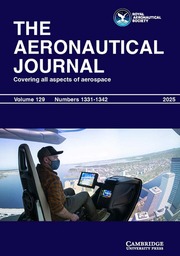Article contents
Studies on twin ellipticjets
Published online by Cambridge University Press: 04 July 2016
Extract
Non circular jets are emerging as a new class ofpassive control mechanism of jet flow. Jets issuingfrom non circular nozzles, rectangular, square,triangular, elliptic etc, are found to entrainseveral times more ambient fluid than equivalentaxisymmetric nozzles. Non circular jets aregenerally referred to as non axisymmetric orthree-dimensional jets. The increased entrainment ofthese asymmetric jets, particularly that of ellipticjets, has attracted the attention of manyresearchers. As asymmetric jets, multiple jets ofdifferent geometric configurations have also beenproved to be effective in passive control of the jetflowfield. Multiple asymmetric jets may be expectedto emerge as an effective method of passivelycontrolling the jets. Many researchers have studiedthe flow field of single three dimensional jets andmultiple circular or plane jets. But studies onmultiple threedimensional jets are very limited.Pani and Dash studied the flowfield ofthree-dimensional single and multiple free jets.Their observed mean velocity distribution resultswere in agreement with the theoretical profiles.
Information
- Type
- Technical Note
- Information
- Copyright
- Copyright © Royal Aeronautical Society 1996
Footnotes
Formerly Gurunanak Dev Engineering College,Bidar, Karnataka, India.
References
- 5
- Cited by

